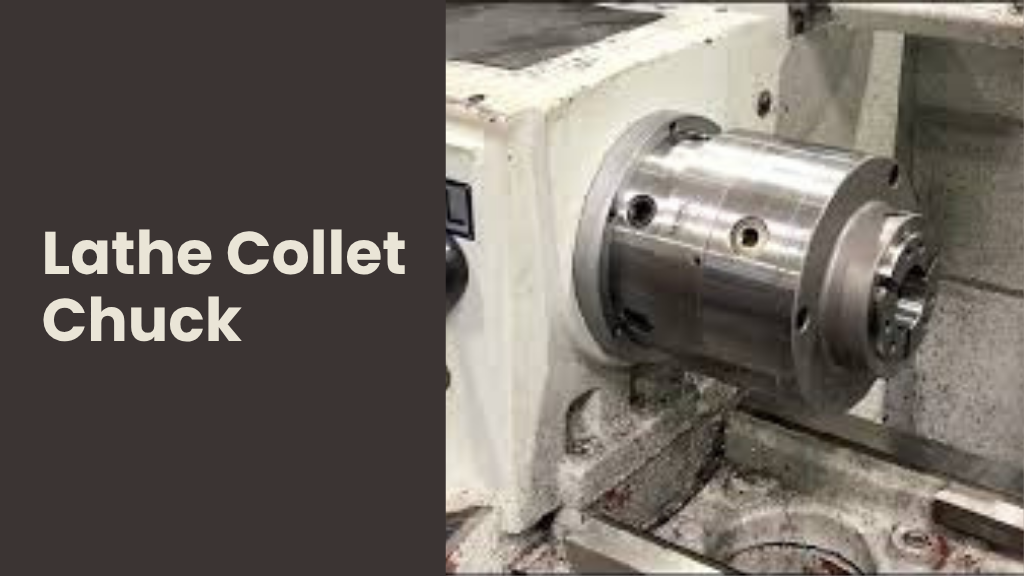In precision machining, even the smallest component can make the biggest difference. The lathe collet chuck is a perfect example. For machinists, manufacturers, and hobbyists, selecting the right collet chuck is critical to achieving high accuracy, repeatability, and efficiency in turning operations.
Whether you are running a high-volume CNC production line or working on a small manual lathe in your own workshop, understanding the function, types, benefits, and selection criteria of a collet chuck can dramatically improve your workflow and product quality.
This guide covers everything you need to know, from what a lathe collet chuck is to how to choose, install, and maintain one, with expert insights, real-world examples, and answers to common questions.
What is a Lathe Collet Chuck
A lathe collet chuck is a specialized workholding device used to securely grip a workpiece during turning operations on a lathe. Unlike standard 3-jaw or 4-jaw chucks, collet chucks use collets, which are cylindrical sleeves with a split design, to apply uniform clamping pressure around the workpiece.
When tightened, the collet contracts evenly, holding the workpiece with exceptional concentricity and minimizing runout. This makes collet chucks ideal for applications requiring high precision such as aerospace parts, automotive components, and fine mechanical assemblies.
Collet chucks are especially valued for their ability to maintain accuracy during repetitive production runs. The uniform clamping ensures that the workpiece is held in the exact same position each time, reducing measurement variations and improving part quality.
How a Collet Chuck Works
The operating principle of a collet chuck is both simple and highly effective.
- The workpiece is inserted into the collet.
- The chuck is tightened manually or by a hydraulic or pneumatic actuator.
- The collet contracts evenly, gripping the workpiece along its circumference.
- The chuck is loosened, allowing the collet to expand and release the workpiece.
This method of clamping offers several advantages over jaw chucks. The even distribution of force minimizes distortion of delicate parts, and the concentric grip ensures accuracy even at high speeds.
Types of Lathe Collet Chucks
The right type of collet chuck depends on the lathe you are using, the materials you work with, and the nature of your projects.
ER Collet Chucks
- Highly versatile and common in both CNC and manual lathes.
- Available in sizes from ER11 to ER50, covering a wide range of diameters.
- Provide strong clamping force, interchangeable collets, and compatibility with round, hexagonal, or square stock.
- Ideal for general machining and applications requiring multiple diameter ranges.
5C Collet Chucks
- Considered an industry standard for small-to-medium workpieces.
- Offer quick setup, excellent repeatability, and availability in round, hex, and square profiles.
- Commonly used for bar feeding, high-volume production runs, and precision turning.
Dead-Length Collet Chucks
- Designed so the collet remains stationary while the sleeve moves.
- Prevents axial movement of the workpiece during clamping.
- Best suited for jobs where precise length control is essential.
Quick-Change Collet Chucks
- Enable the operator to swap collets in seconds without removing the chuck.
- Ideal for high-mix, low-volume production where changeovers are frequent.
Pneumatic and Hydraulic Collet Chucks
- Operated automatically for consistent clamping pressure.
- Common in high-volume CNC operations.
- Reduce operator fatigue and increase production speed.
Key Benefits of a Lathe Collet Chuck
Investing in a high-quality collet chuck can significantly enhance both the efficiency and quality of your machining operations.
- Superior Accuracy: Reduced runout keeps workpieces perfectly aligned, ensuring parts consistently meet strict tolerances and quality standards.
- High-Speed Capability: A well-balanced design allows for stable machining at higher RPMs, enabling faster production without sacrificing precision.
- Faster Setup: Quick and secure clamping/unclamping reduces changeover time, boosting overall shop productivity.
- Improved Surface Finish: Even and uniform grip minimizes chatter and vibration, producing smoother, high-quality surface finishes.
- Enhanced Safety: A stronger and more consistent grip lowers the risk of workpiece slippage or ejection during high-speed operations.
- Lower Scrap Rates: Precise and repeatable positioning helps reduce dimensional errors, cutting down on wasted material and rework.
Factors to Consider When Choosing a Lathe Collet Chuck
Installation and Setup Tips
Proper installation of a lathe collet chuck is essential for achieving optimal performance, precision, and safety in your machining process.
- Clean the spindle nose thoroughly: Remove all dust, chips, and debris to ensure a secure, accurate fit between the chuck and spindle. Even small particles can cause misalignment or vibration.
- Mount the chuck correctly: Follow the manufacturer’s torque specifications when tightening to avoid over-stressing or under-securing the assembly.
- Insert the collet fully: Make sure the collet is properly seated in the chuck body to maintain even clamping pressure and accuracy.
- Test at low speed first: Run the lathe at a slow RPM to verify smooth rotation and check for any unusual vibration or noise.
- Measure and adjust runout: Use a dial indicator to measure runout, and make adjustments as needed to achieve precise alignment.
Maintenance Best Practices
Consistent maintenance not only extends the lifespan of your lathe collet chuck but also ensures it continues to deliver precision and reliability.
- Clean after every use: Remove metal chips, coolant residue, and dust from the chuck body and collet surfaces to prevent wear and corrosion.
- Inspect collets for wear: Look for signs of cracking, scoring, or deformation. Replace worn collets promptly to maintain accuracy and grip strength.
- Lubricate moving parts: Follow the manufacturer’s lubrication schedule to keep mechanisms smooth and prevent premature wear.
- Monitor runout periodically: Use a dial indicator to check for misalignment or spindle issues before they affect production quality.
Real-World Case Study
A mid-sized manufacturer producing small-diameter automotive shafts replaced its traditional 3-jaw chuck with a 5C collet chuck.
The results were significant:
- Setup time was reduced by 40 percent.
- Scrap rates decreased by 25 percent.
- Production output increased by 15 percent without additional labor.
The investment paid for itself in less than six months through improved efficiency and reduced waste.
Advanced Tips for Optimizing Collet Chuck Performance
Maximizing the performance and lifespan of a collet chuck requires proper selection, handling, and maintenance. Here are some expert tips:
- Match Collet Size to Workpiece Diameter
Always use a collet that closely matches the workpiece size to ensure maximum grip strength and maintain high accuracy. - Use Soft Collets for Delicate Parts
For fragile or finely finished components, soft collets help prevent surface marring or deformation during clamping. - Balance for High-Speed Applications
At elevated RPMs, ensure the collet chuck is properly balanced to reduce vibration and improve surface finish quality. - Keep Dedicated Collets for Precision Work
Reserve a specific set of collets for critical tolerance jobs. This minimizes wear-related inaccuracies from repeated use. - Avoid Overtightening
Excessive clamping pressure can damage both the collet and the workpiece, potentially leading to costly rework or replacement.
Common Mistakes to Avoid
Avoiding these frequent errors will help maintain accuracy, safety, and the lifespan of your lathe collet chuck:
- Using a worn collet: Worn or damaged collets can compromise grip, reduce machining accuracy, and even damage the workpiece.
- Neglecting to clean chips and debris: Accumulated material can cause misalignment, increase runout, and lead to premature chuck wear.
- Ignoring torque specifications: Over-tightening or under-tightening during installation can affect chuck performance and risk damage to both the chuck and spindle.
- Mixing collets from different brands: Inconsistent dimensions and tolerances can result in poor fitment, reduced precision, and potential safety hazards.
Conclusion
The lathe collet chuck is an essential tool for achieving accuracy, speed, and efficiency in machining operations. By choosing the right type, installing it properly, and maintaining it regularly, you can significantly improve your results and reduce downtime.
Whether you are a hobbyist working on small parts or a manufacturer running high-volume production, understanding and applying the principles outlined in this guide will help you get the most out of your equipment and deliver high-quality results every time.
FAQs
What accuracy tolerance can I expect from a high-quality lathe collet chuck
High-quality models often deliver runout accuracy of 0.005 millimeters or better when used with precision collets.
How do I choose between ER and 5C collets
ER collets provide more flexibility in size ranges, while 5C collets are faster to change and often preferred for production runs.
Can I use a collet chuck for large-diameter workpieces
Collet chucks are best for small-to-medium diameters. For larger workpieces, a jaw chuck may be more appropriate.
How often should I replace collets
This depends on usage, but in heavy production, collets may need replacing every six to twelve months.
Are hydraulic collet chucks worth the investment
Yes, especially for high-volume CNC operations where consistent clamping and speed are important.




